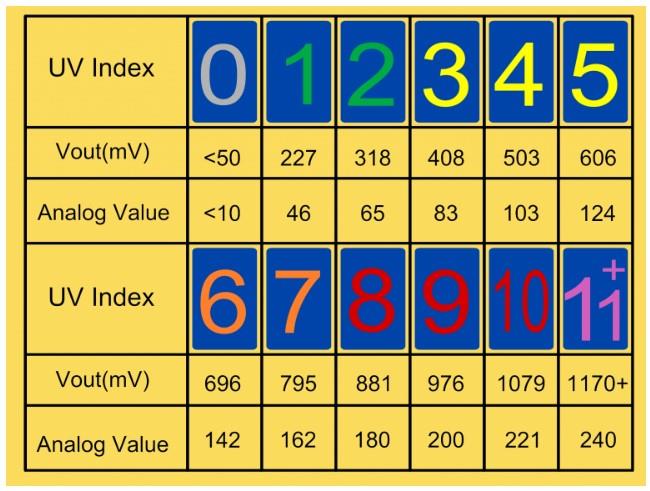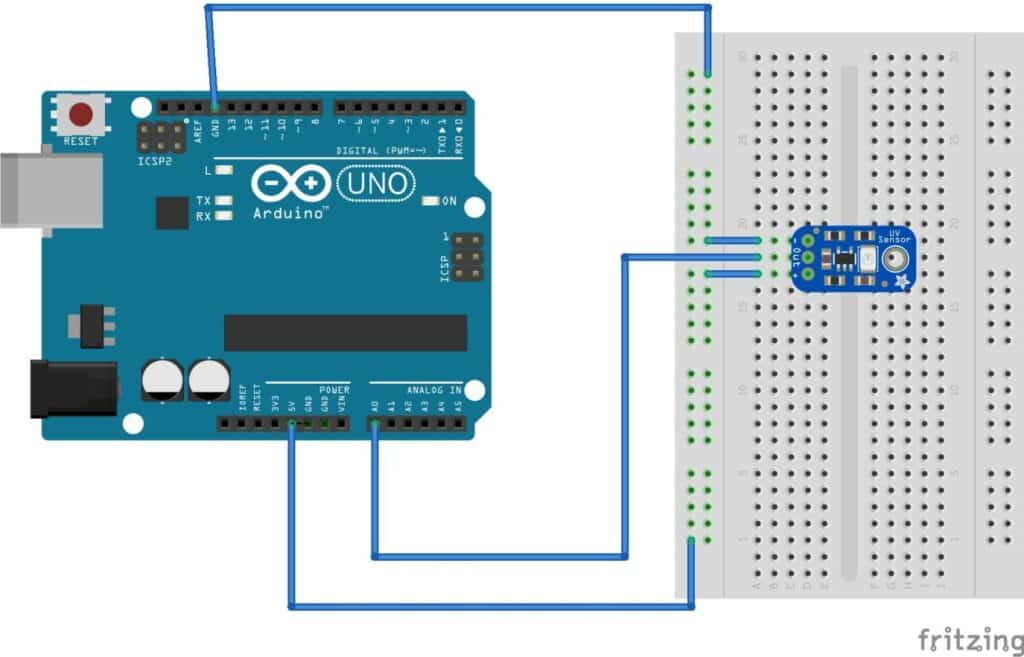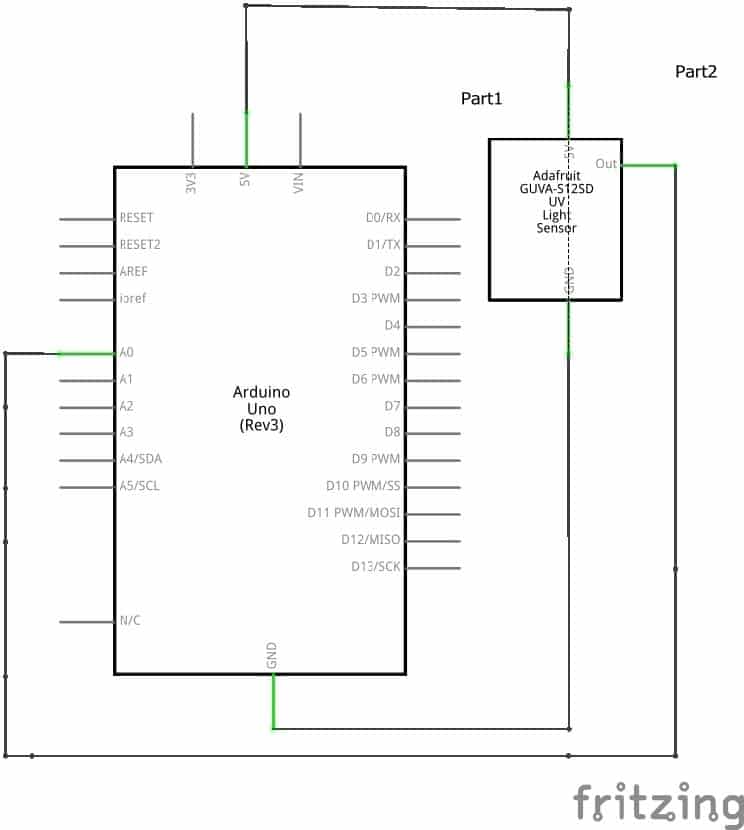
Introduction
UV rays are reputed to have versatile characteristics in various capacities. With the ill effects
of the mobile screen, and due to the increasing popularity of the Smart watches, many of us
look into the face of a smart watch, first thing in the morning. The issue is – Is it safe? Does it emit UV rays that could damage your eyes?
The present article is associated with “Parishuddhi Yantra”, a funded project sponsored worth ₹ 32,000/- INR by SSIP 1.0, SSIP Cell, Govt of Gujarat, India.
PoC Video Tutorial In English:
PoC Video Tutorial In Hindi:
The proposed setup is used to check the intensity of ultraviolet (UV) rays generated by a UV C Lamp generally meant for sanitization purposes. Also, we have investigated the emission of UV rays by a smartwatch to reveal its intensity and harmfulness. Figure 1 shows the author’s prototype of various experiments. It demonstrates the responsivity across various wavelengths and the variation in the output voltage with respect to the UV index. Figure 2 is the block diagram representation of the entire setup.


The GUVA-S12SD UV Sensor chip is suitable for detecting UV radiation that is generated by any light source be it sunlight, fire, torch, lamps, LEDs, heat lamps. It can be used in any application where you want to monitor for the amount of UV light and is simple to connect to any microcontroller. It is an analog UV light to voltage converter for measuring the intensity of UV light. It is a true UV detector that only detects light from 240nm to 370nm which is the UV-B and most of the UV-A spectrum. It also picks up the upper end of the UV-C spectrum.
The UV Index is an important vehicle to raise public awareness of the risks of excessive exposure to UV radiation, and to alert people about the need to adopt protective measures. As part of an international effort, the UV index was developed by the World Health Organization (WHO), the United Nations Environment Programme, the World Meteorological Organization and the International Commission on Non-Ionizing Radiation Protection. Figure 3 represents the widely accepted UV Index chart. As evident from figure 3, the smaller indices represent lesser intensity. The higher intensities are meant for variable tasks like in industrial processes, medical and dental practices for a variety of purposes, such as killing bacteria, creating fluorescent effects, curing inks and resins, phototherapy and sun tanning. The purpose varies with respect to the wavelengths and the intensities. UV lamps emit radiation that is enough to kill germs. They are used in healthcare to sterilize surgical instruments. UV rays are also used in the purification of water and the pharmaceutical industry.

GUVA-S12SD is a Gallium Nitride material based Schottky-type photodiode, optimized for photovoltaic mode operation. It is followed by an Op-Amp IC SGM8521. It is a rail-to-rail input and output voltage feedback amplifier. Op-Amps that use the complete span between negative and positive supply voltages are called as rail to rail op-amps. Normal op-amps have a maximum voltage swing and cannot use the whole span of power supply. Rail to rail op-amps can use the complete span of power supply thereby increasing the available signal range. This Op-Amp has a wide input common-mode voltage range and output voltage swing, and takes the minimum operating supply voltage down to 2.1V and the maximum recommended supply voltage is 5.5V. Besides, SGM8521 provides 150kHz bandwidth at a low current consumption of 4.7 μA. Figure 4 covers most of these aspects in maximum detail.

| Table 1 Bill of materials: | ||
| Components | Amount | Description |
| Arduino UNO | 1 | For Programming |
| UV Sensor (CJMCU-GUVA-S12SD) | 1 | To Detect UV Rays |
| UVC Lamp | 1 | For sanitization |
| Jumper Wire | 3 | Male-Female jumper Wire |
- UV sensor- CJMCU-GUVA-S12SD(MOD 1)
- Arduino UNO R3 (MOD2)
- UVC lamp (MOD3)
- Jumper wires
| Table 2 Board Labels and Pin Functions of Arduino Uno | ||
| Connections UV Sensor (CJMCU-GUVA-S12SD) and Arduino UNO | ||
| Board label | Pin function (UV sensor) | ARDUINO UNO |
| GND | GROUND | GND |
| 5V | 5 Power Input | 5V |
| OUT | Output of the sensor | PIN A0 |
Specifications of the Sensor:
- Low power consumption
- Power supply voltage of 2.5 V ~ 5 V
- Working current is microamps.
- High sensitivity
- High stability
- Wide detection range: 240 nm to 370 nm
- Wide Angle: 130 degrees
- Schottky type photosensitive diode
- Size: 11 mm x 27 mm


When the light rays emitted by any source falls on the photodiode of the UV sensor, it generates a value. This sensor value is read using the analog read command. Corresponding voltage is evaluated and both the values are displayed on the serial monitor. The same sensor is tested with a Smart watch and a UV C lamp both. Figure 7 shows the typical readings of the smart watch.

The UVC lamp used for testing is a special purpose lamp, generally targeted towards sanitization tasks. Following are its specifications: Bulb shape size A21, with a bulb base E27, Incandescent, 4000 Kelvin, 22,500 Lumen, 250 Watts having average life of 5000 hours, manufactured by Philips at the Republic of Korea. Figure 8 shows the reading of lamp.

On a conclusive note, the smart watch does emit UV rays in the range of 0-2 UV Index which is the range of minimal danger and cannot be considered harmful for humans.
Arduino Code:
void setup()
{
Serial.begin(9600);
}
void loop()
{
float sensorVoltage;
float sensorValue;
sensorValue = analogRead(A0);
sensorVoltage = sensorValue/1024*5.0;
Serial.print("sensor reading = ");
Serial.print(sensorValue);
Serial.print(" sensor voltage = ");
Serial.print(sensorVoltage);
Serial.println(" V");
delay(10000);
}Acknowledgement:
We are thankful to SSIP Cell, Govt of Gujarat for funding the project
Dr. Geetali Saha is a faculty of the department of Electronics and Communication Engineering, GCET, Anand, Gujarat and Parth Shah from 3rd Year IT Engineering department is my lead student coordinator working on this sponsored project.







Thank you for the useful and healthy project.
The Fig.5 and Fig.6 shows Adafruit analog UV Light Sensor Breakout – GUVA-S12SD
But in the block diagram and bill of materials UV Sensor (CJMCU-GUVA-S12SD)
mentioned in the project? Which sensor was used? Which one should I use?